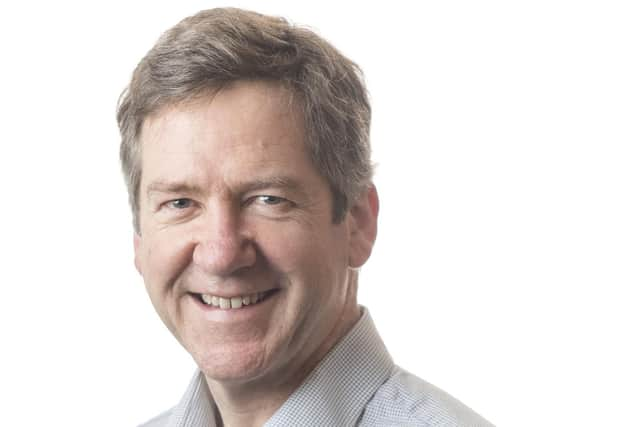We must act now to fix the future - Jamie Goth
Whilst these events seem to come out of the blue, it feels like we always get back to an even keel, where everyday life can resume.
However, scientists tell us that if we continue on our current trajectory, within the lifetime of today’s children, the relationship between the everyday norm and the extreme could switch. Children will grow up facing more frequent extreme weather events.
Advertisement
Hide AdAdvertisement
Hide AdThe many beautiful and historic buildings in Scotland and the rest of the UK include some of the leakiest and least insulated in Europe. The risk of these buildings overheating in the hottest weather and becoming unheatable in the coldest will increase.


For comfort, and to save the lives of the most vulnerable amongst them, these "children”, when they reach adulthood, will be insulating the legacy buildings we leave them with against the extremes of weather – even if the investment is not recouped by the savings in energy costs. They’ll want to save lives.
But we should be achieving this sooner whilst also saving on our bills and improving the resilience and security of our energy supply.
Of course, it is easy to say and difficult to do in times of short-term financial constraint and geopolitical factors. We must give sufficient priority now to what will be the emergencies tomorrow and not leave it to our children and the generations that follow to fix.
2020 changed our relationship with our built environment, encouraging more use of the outdoors, avoiding crowded indoor spaces and a massive uptick in home working.
2022 has brought gas price hikes arising from Russia’s invasion of Ukraine. Using more energy to heat our homes and workspaces than is absolutely essential is becoming unaffordable. All forms of energy are affected – including renewably generated electricity and heat.
Worse than the affordability challenge is energy security and the prospect of unavailability of energy in the coming winter. This is a greater challenge for colder and less energy-independent European nations than Scotland, but it’s still early days in a complex, global market.
Whether the driver is energy’s scarcity, its cost or the effect on the atmosphere of burning it, we need to find a way to stay warm and healthy whilst using much, much less of it.
Advertisement
Hide AdAdvertisement
Hide AdOver the last number of years, infrastructure body, the Scottish Futures Trust has managed the Learning Estate Investment Programme (LEIP) on behalf of the Scottish Government, in collaboration with local authorities.
The programme is delivering schools that will use less than half of the energy consumed by some of our legacy estate. These new and deeply retro-fitted schools and community assets will have excellent energy performance, whilst fully respecting the aesthetic and heritage value of Scotland’s many historic buildings. These are the outcomes we need for all of our buildings.
In parallel with this, Scottish Futures Trust and our strategic partners (Zero Waste Scotland, Health Facilities Scotland and Architecture and Design Scotland) developed Scottish Government’s Net Zero Public Sector Buildings Standard.
The Standard helps new build projects across the public estate to achieve the excellence in energy, carbon and comfort that LEIP schools are aiming for. This summer, we have extended this work to develop a Standard for Existing Buildings that will be launched later this year.
The challenge of bringing existing buildings to an exemplary standard of energy, carbon and comfort is significant, but the benefits for people, businesses and the environment are even greater.
Jamie Goth, Associate Director in the Net Zero Buildings Team at the Scottish Futures Trust
Comments
Want to join the conversation? Please or to comment on this article.